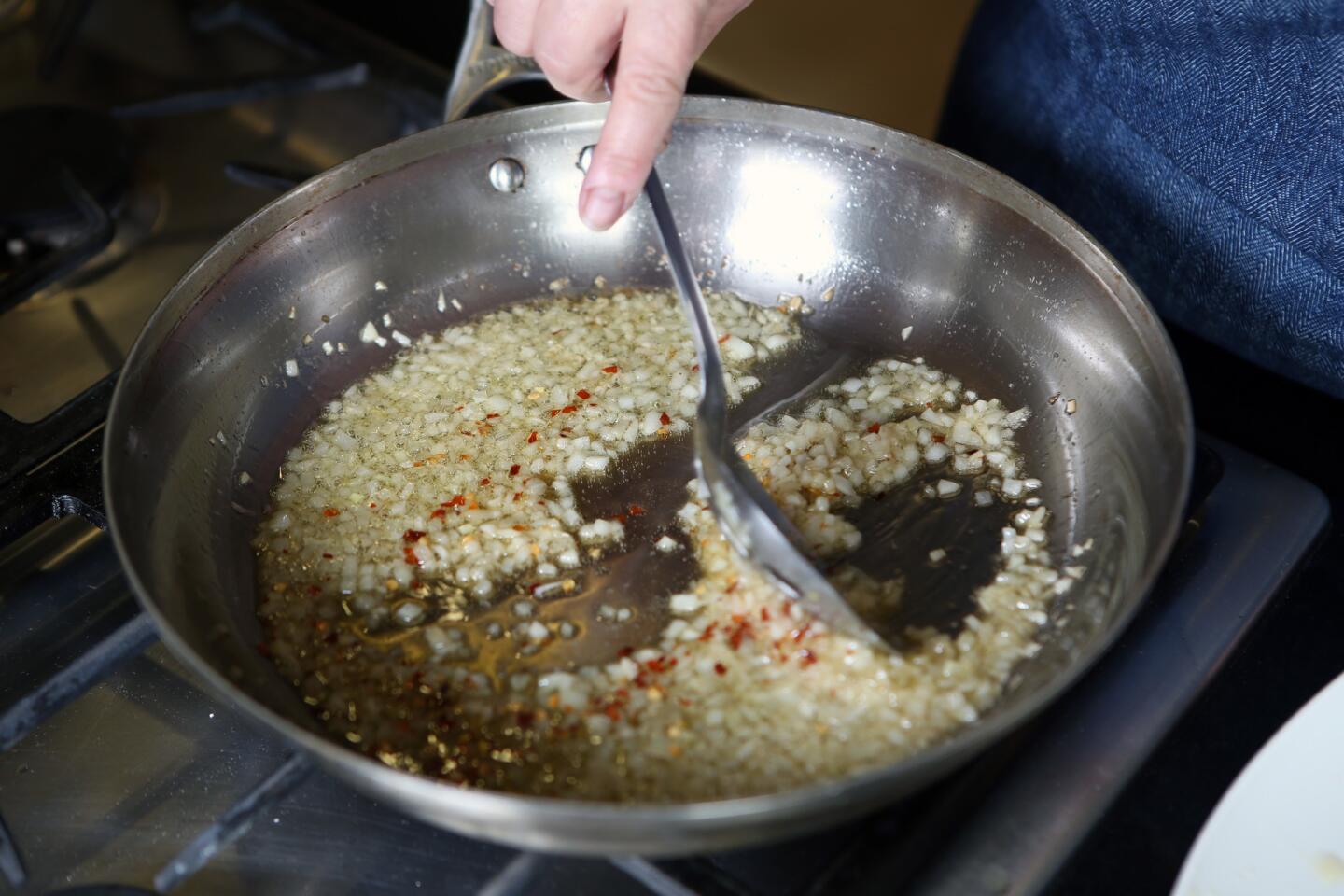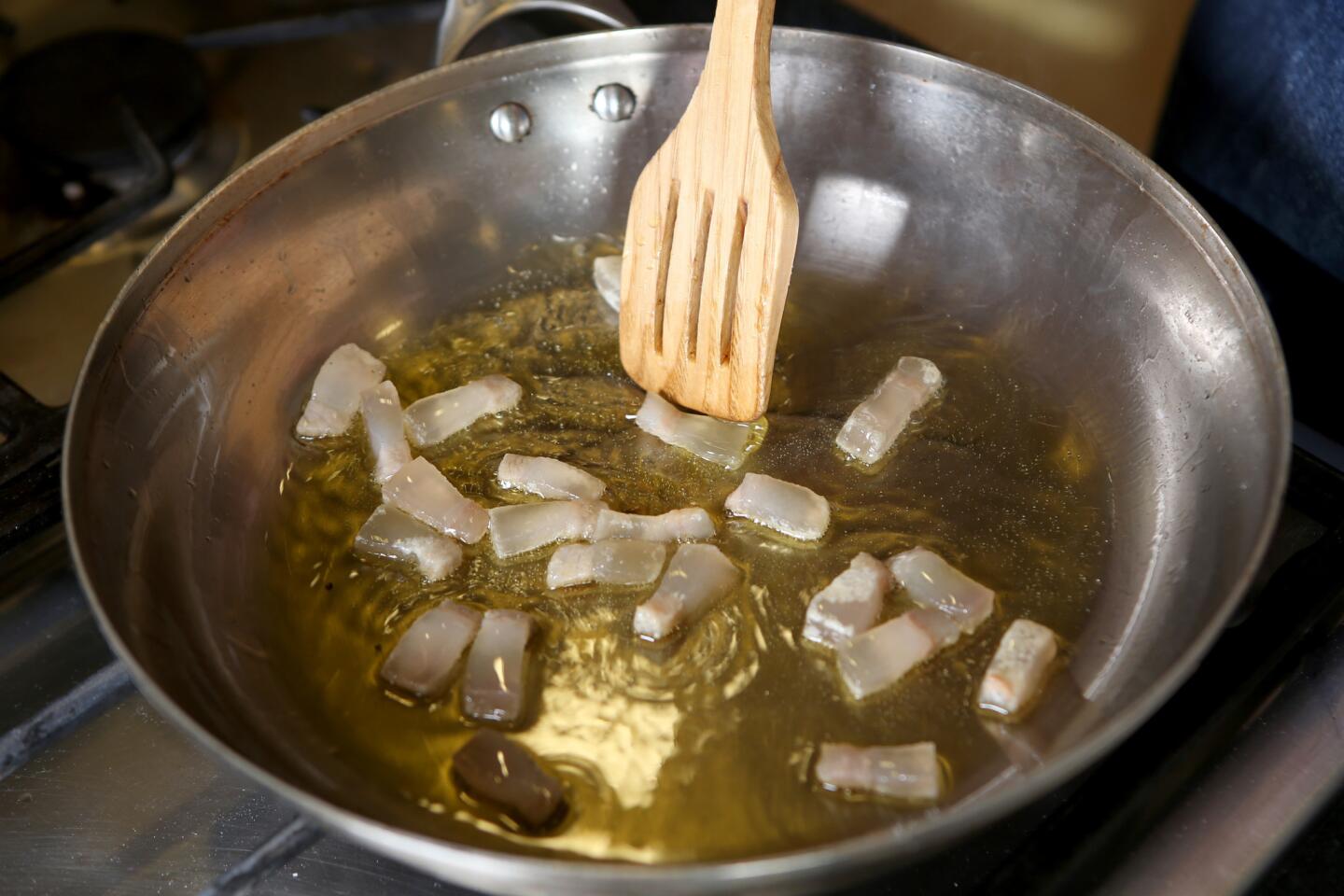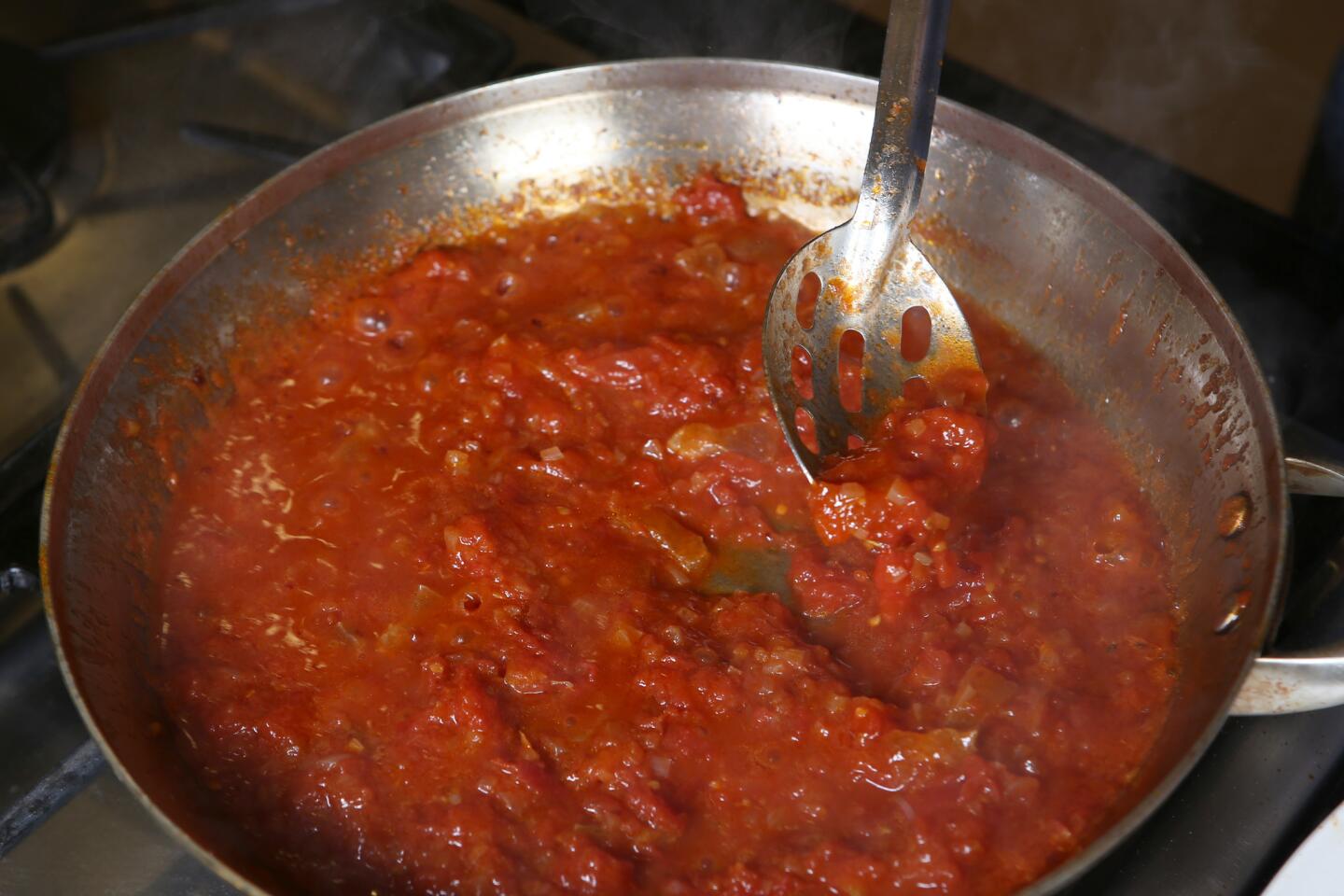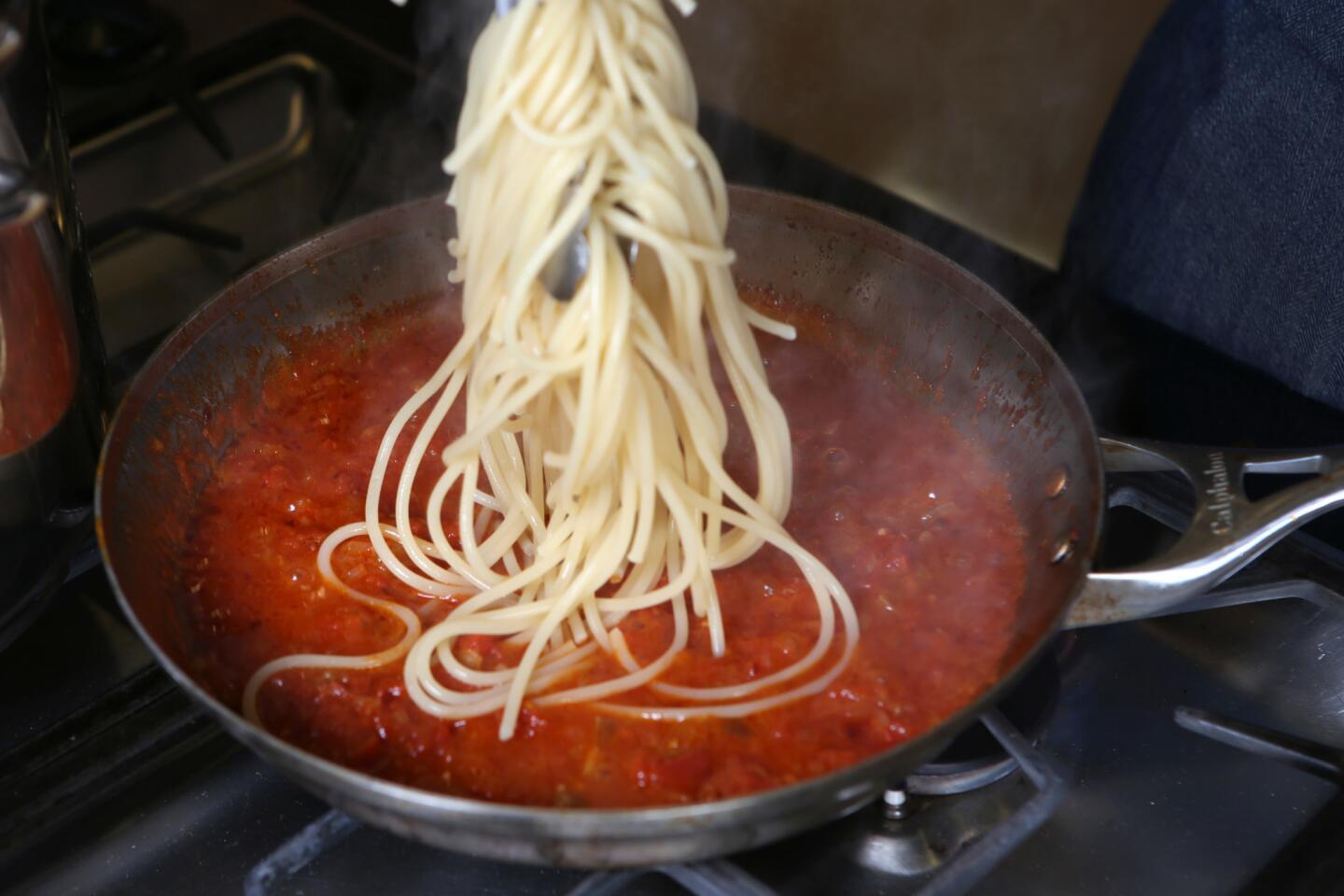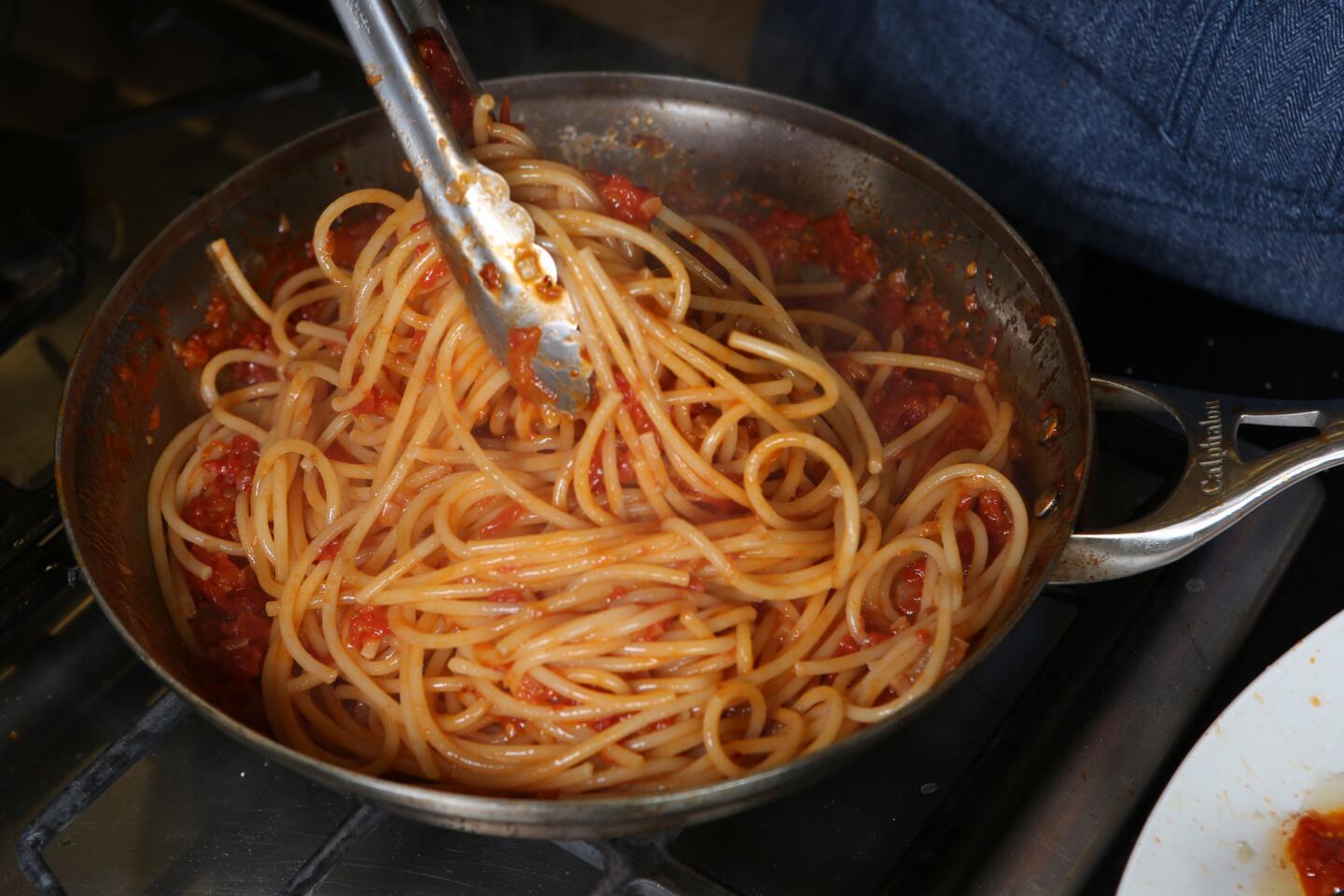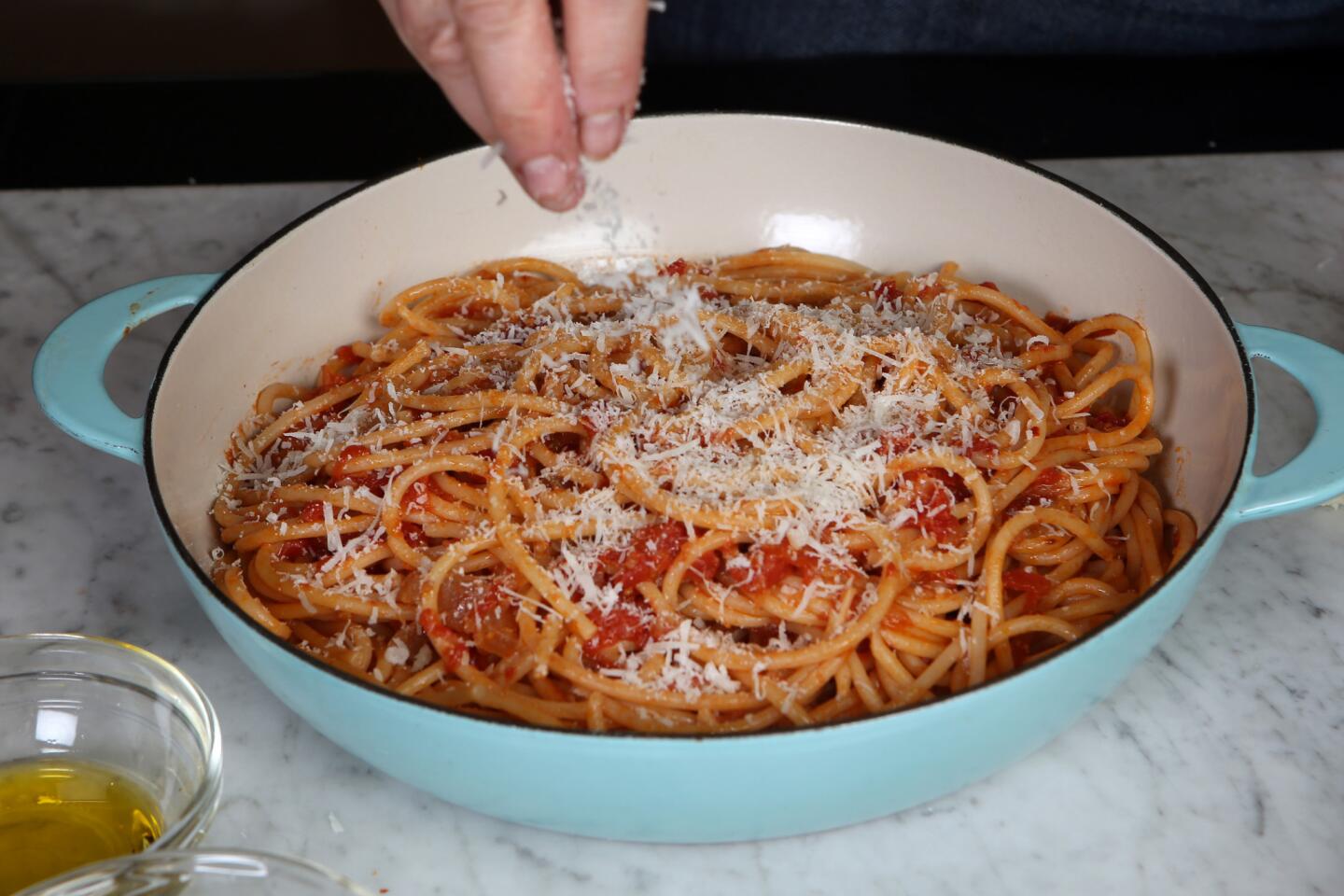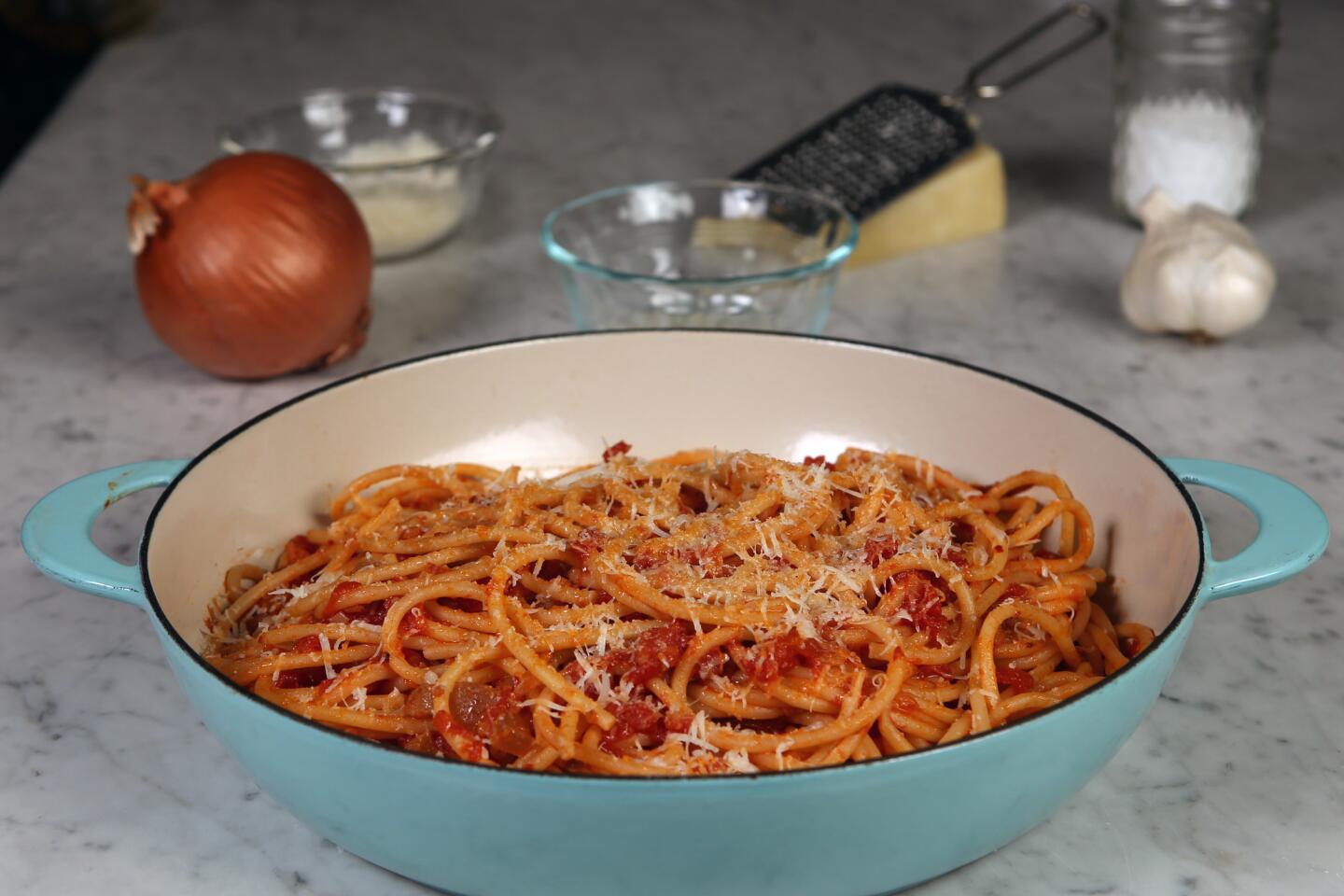Making pasta all’Amatriciana, the classic Italian pasta dish
I just came back from a trip to Rome, where I ate a lot of the Roman triad of pastas: cacio e pepe, carbonara and Amatriciana. The first two are having a moment in modern Italian restaurants, but I’d like to focus on the third, Amatriciana. Why? Because it gets less press, is a simple-to-make, tomato-based sauce — and is just incredibly good.
The quick-to-put-together sauce is named either for the town of Amatrice or a 19th century inn on an alley in Rome named for folks from the town, il vicolo degli Amatriciani. Pick your choice of story. The sauce is seasoned with guanciale, a bit of hot chile pepper and onion. What I love about Amatriciana is its high ratio of happy-eating-satisfaction to prep time. That said, nearly every ingredient except the tomato has cheerleaders or naysayers. Which means that it’s a nightmare for the authenticity police: It’s a sauce where the personal is the authentic. In this age of sensitivity to Columbusing, it is good to remember that often the cook taking liberties with your favorite family recipe is also the cook who shares your nationality.
Although I know that culinary authenticity is an illusion, I often think that the greatest argument in favor of authenticity is how fervently the minutiae of a particular dish is debated among “native” home cooks. Don’t believe me? Here are the ways you can start an argument in Rome. First, state a preference for either guanciale or pancetta. (Do not bring up bacon, ever.) Tell someone you put onion in your Amatriciana and watch your listeners’ lips purse and nostrils flare. No, you do not put onion in your Amatriciana, you’re told with a definitive shake of the head. They don’t use peperoncino, they use black pepper and no peperoncino: How is that even possible? They probably add basil too. At this point, it’s best to shut up — or maybe just invite your Roman friend over for dinner. Enough wine and carbohydrates will soothe any argument — or at least fortify the warring parties to fight another day.
I believe in peace around the table, so let’s take a look at the choices you can make when cooking Amatriciana at home.
The list of possible ingredients goes like this: olive oil, guanciale or pancetta, onion, maybe garlic, peperoncino (hot pepper flakes or fresh red), peeled tomatoes in juice or tomato sauce, white wine (a strange aberration to me), but asserted as correct by the mayor of Amatrice, and grated pecorino Romano.
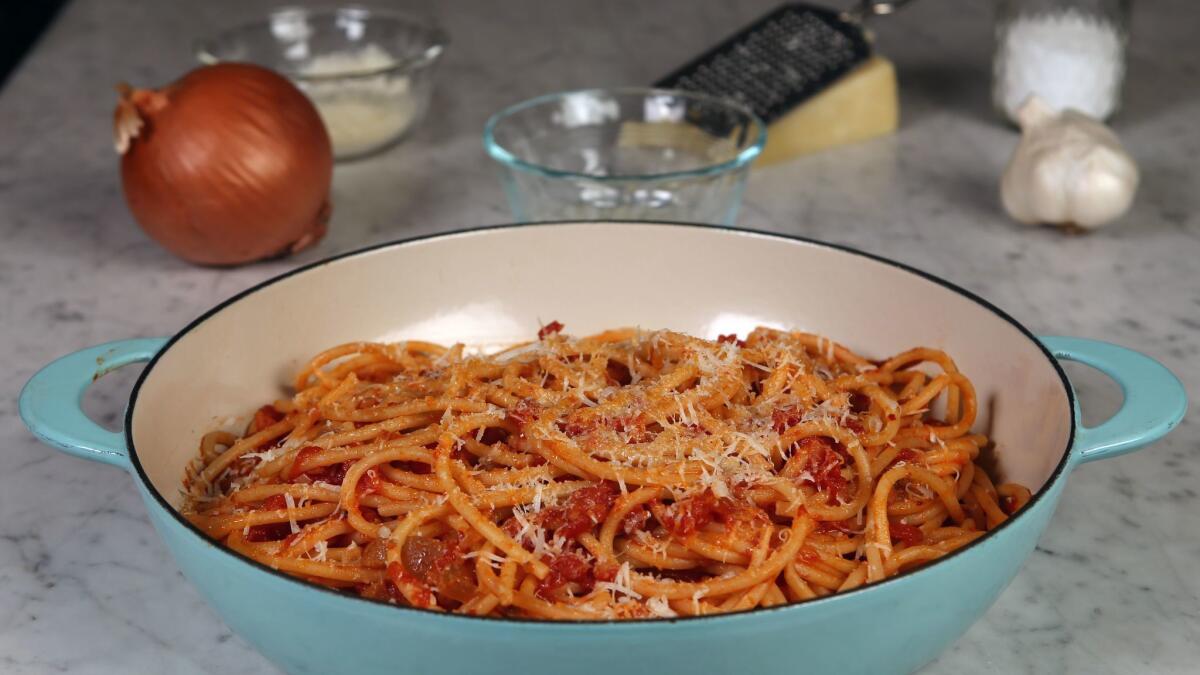
Recipe: Pasta All’ Amatriciana »
The sauce is typically served with bucatini, a long noodle slightly thicker than spaghetti and pierced with a hole or “buco.” The thickness of bucatini pretty much guarantees a messy meal, so spaghetti or tortiglioni (smaller diameter rigatoni) is permissible.
My choices are guanciale, onion, tomato and red chile flakes, and here are my justifications. The porkiness of Amatriciana defines the sauce but, given that it is born out of cucina povera, or the poverty kitchen, it strikes me as poor form to use too much guanciale. It’s not a meat sauce; it’s a tomato sauce flavored with a bit of cured pork. Also, I prefer guanciale to pancetta because I find that it’s usually more cured, and therefore gives more rendered fat than water.
I find the sweetness of a bit of cooked onion balances the pork — but if it offends you, leave it out. I like a hit of heat in the form of hot pepper with my tomato sauces, so I use red chile flakes or a whole fresh small chile with a slit cut into it. I do not use garlic, as the sauce doesn’t need it and I prefer the clarity I get by leaving it out. As for the tomatoes, this is one of those year-round sauces that tastes odd when made with fresh tomatoes. I make my own canned tomatoes, but if you buy yours, get your favorite brand. (I don’t think you need to buy San Marzanos; that’s the subject for another story.) I break up the canned tomatoes with my fingers as I transfer them to the pan — or I mash them with a potato masher — and I use all the juices.
That said, the recipe I present here is my recipe. If you long to make it with pancetta and garlic, but no onion, black pepper or white wine, well, that’s your prerogative. I won’t think any less of you.
Kleiman ran Angeli Caffe for 27 years. She’s the longtime host of KCRW-FM’s “Good Food.”
More to Read
Eat your way across L.A.
Get our weekly Tasting Notes newsletter for reviews, news and more.
You may occasionally receive promotional content from the Los Angeles Times.
